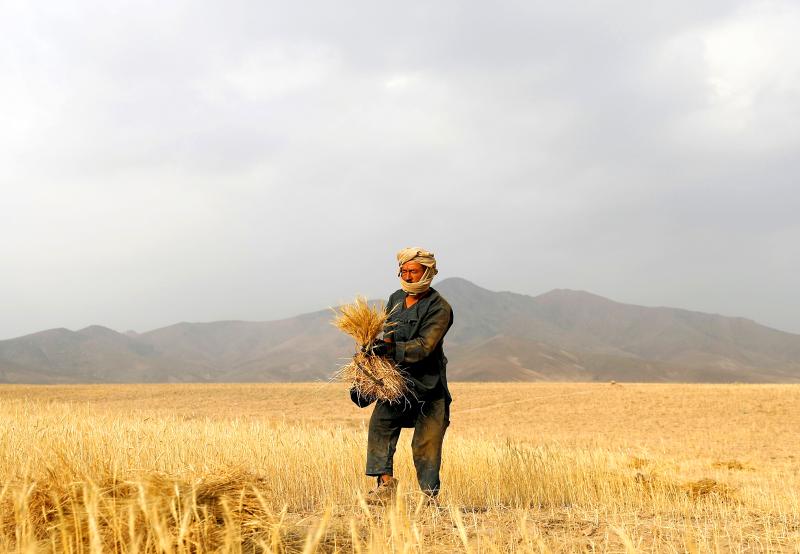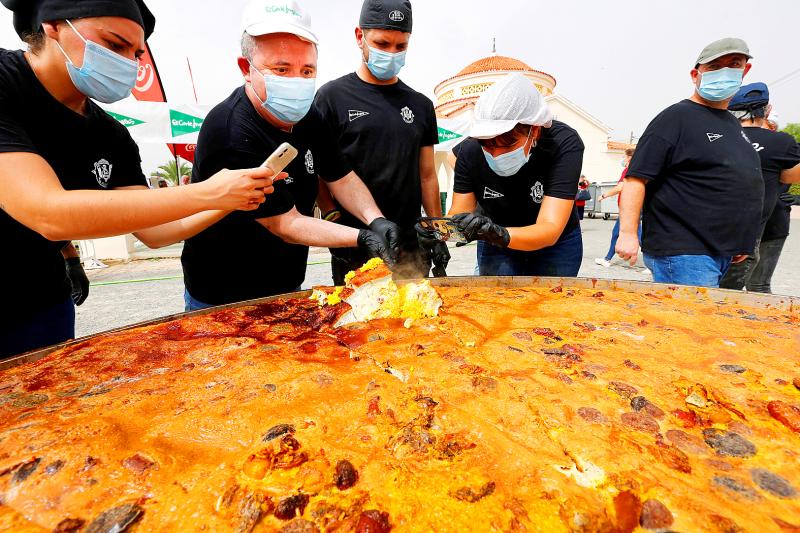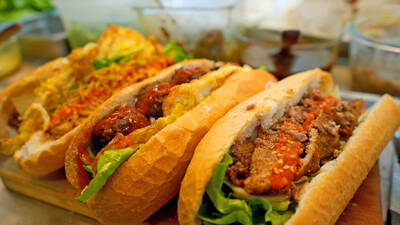Food production around the world will suffer as global heating reaches 1.5 degrees Celsius, with serious effects on the food supply in the next two decades, scientists have warned, following the biggest scientific report yet on the climate crisis.
Rising temperatures will mean there will be more times of year when temperatures exceed what crops can stand, according to the Intergovernmental Panel on Climate Change (IPCC), in its sixth assessment report published on Monday.
Politicians around the world continued to respond to the report. Boris Johnson, British prime minister, published a video on his social media channel, setting out the four areas he wanted to focus on in the run up to the autumn’s climate change summit: outlawing coal for power generation by 2040, ditto fossil fuels for transport; getting countries to stump up cash to help poorer nations with climate change; and ending “the massacre of the forests.”

Photo: REUTERS
US president Joe Biden was under pressure to get his climate change legislation passed after saying “We can’t wait to tackle the climate crisis. The signs are unmistakable. The science is undeniable. And the cost of inaction keeps mounting.”
In Australia Prime Minister Scott Morrison pointed the finger at China, saying in a press conference on Tuesday that it could not be ignored that the developing world accounts for “two-thirds of global emissions,” and adding that China’s emissions “accounted for more than the entire OECD combined.”
The Chinese government issued a statement saying that “China has insisted on prioritizing sustainable, green and low-carbon development.” It added that President Xi Jinping (習近平) intended to “strictly control” the growth of coal power plants.

Photo: EPA-EFE
Challenges to our food production systems will be just one of the impacts, the report found: changing rainfall patterns will leave many areas vulnerable to drought, while extreme weather will make agriculture harder and damage crops.
LOOMING FOOD CRISIS
Bonnie Waring, senior lecturer at the Grantham Institute, Imperial College London, said: “Across the globe, over 80 percent of calories consumed come from just 10 crop plants, including rice, maize and wheat. Although a few staple crops — like soybean — may do better in a warmer future, warming temperatures and increasingly frequent droughts are likely to reduce yields of these key crops across many regions of the globe.”
The full spectrum of the damage will not be fully revealed until next year, when the IPCC publishes the second part of its landmark assessment, which will cover the impacts of climate breakdown on key areas of human life and the planet.
The first part of the report, published this week, deals with the physical science basis of climate change — that is, what will happen to the atmosphere, seas and land — but from those finding many of the likely harms to agriculture can already be assessed.
Ilan Kelman, professor of disasters and health at University College London, said: “If we fail to act, then significant numbers of people could face major problems with food. Increased heat and humidity will harm current crops and livestock, with droughts and floods having the potential to wipe out harvests as well. Massive shifts in agricultural practices, including changes to crops and livestock, would be needed to counter these effects.”
David Reay, professor of carbon management at Edinburgh University, added: “For key staples like rice — the main source of nourishment for over a billion of us — warming is not just changing rainfall patterns, it is threatening the glacial meltwaters that irrigate millions of hectares of South Asian croplands.”
‘WET BULB’ TEMPERATURES
Extreme weather this year has also revealed another major impact: when “wet bulb” temperatures soar, people cannot safely work in the fields. These conditions occur when both heat and humidity are high, and people’s bodies cannot wick away sweat efficiently.
Some people have speculated that warming temperatures could be good for agriculture, by allowing for longer growing seasons in northern latitudes, and from the fertilizing effect of more carbon dioxide in the atmosphere, which plants absorb from the air as they grow. Mark Maslin, professor of earth system science at UCL, dismissed these claims.
“Any benefits are likely to be small and will be outweighed by the damages and the risk of extreme weather,” he said, warning that food prices rises will also be a major danger.
Animal husbandry will also be affected, though reducing our reliance on meat and dairy products is likely to be one of the key ways of slowing global heating: Methane, much of it from agricultural sources including ruminants and manure, is one of the leading causes of climate breakdown identified in the IPCC assessment report.
Rob Percival, head of food and health policy at the UK’s Soil Association, said people did not need to give up eating or producing meat, but that food consumption patterns needed to change alongside food production.
“A rapid transition to agroecological farming offers a healthier and more sustainable approach to producing our food and requires a shift in our diets to less and better meat, with an emphasis on fresh fruit and vegetables and the consumption of more pulses and legumes,” he said.
Shefali Sharma, director of the Institute for Agriculture and Trade Policy, said that all areas would be affected, not just the poorer regions of the world where many farmers are already vulnerable, and that all governments must act urgently.
“Governments must begin taking urgent steps now to build resilience into agri-food systems,” he said. “This means building soil health, agricultural biodiversity in crops and animals, serious extension work that builds on traditional knowledge and local breeds and seeds and adequate support for adaptation.”

We lay transfixed under our blankets as the silhouettes of manta rays temporarily eclipsed the moon above us, and flickers of shadow at our feet revealed smaller fish darting in and out of the shelter of the sunken ship. Unwilling to close our eyes against this magnificent spectacle, we continued to watch, oohing and aahing, until the darkness and the exhaustion of the day’s events finally caught up with us and we fell into a deep slumber. Falling asleep under 1.5 million gallons of seawater in relative comfort was undoubtedly the highlight of the weekend, but the rest of the tour

Youngdoung Tenzin is living history of modern Tibet. The Chinese government on Dec. 22 last year sanctioned him along with 19 other Canadians who were associated with the Canada Tibet Committee and the Uighur Rights Advocacy Project. A former political chair of the Canadian Tibetan Association of Ontario and community outreach manager for the Canada Tibet Committee, he is now a lecturer and researcher in Environmental Chemistry at the University of Toronto. “I was born into a nomadic Tibetan family in Tibet,” he says. “I came to India in 1999, when I was 11. I even met [His Holiness] the 14th the Dalai

Following the rollercoaster ride of 2025, next year is already shaping up to be dramatic. The ongoing constitutional crises and the nine-in-one local elections are already dominating the landscape. The constitutional crises are the ones to lose sleep over. Though much business is still being conducted, crucial items such as next year’s budget, civil servant pensions and the proposed eight-year NT$1.25 trillion (approx US$40 billion) special defense budget are still being contested. There are, however, two glimmers of hope. One is that the legally contested move by five of the eight grand justices on the Constitutional Court’s ad hoc move

Stepping off the busy through-road at Yongan Market Station, lights flashing, horns honking, I turn down a small side street and into the warm embrace of my favorite hole-in-the-wall gem, the Hoi An Banh Mi shop (越南會安麵包), red flags and yellow lanterns waving outside. “Little sister, we were wondering where you’ve been, we haven’t seen you in ages!” the owners call out with a smile. It’s been seven days. The restaurant is run by Huang Jin-chuan (黃錦泉), who is married to a local, and her little sister Eva, who helps out on weekends, having also moved to New Taipei